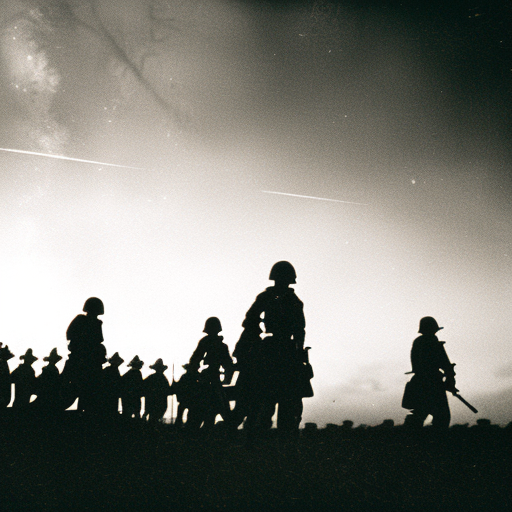Battle of the Frontiers: A Summary
The Battle of the Frontiers was a series of engagements fought between the German and French armies in August 1914, at the beginning of World War I. It marked the first major clash on the Western Front and set the stage for the four-year-long trench warfare that would follow.
Background:
After the assassination of Archduke Franz Ferdinand of Austria-Hungary in June 1914, tensions escalated in Europe. Germany, Austria-Hungary, and the Ottoman Empire formed the Central Powers, while France, Russia, and Britain formed the Triple Entente. On August 3, Germany declared war on France and invaded Belgium, violating its neutrality. This prompted Britain to declare war on Germany.
German Offensive:
The German plan, known as the Schlieffen Plan, aimed to quickly defeat France by launching a massive offensive through Belgium and encircling Paris. The plan relied on a swift victory in the west before turning attention to the eastern front against Russia. However, the plan faced several challenges, including the resistance of Belgian and French forces.
The Battle Begins:
On August 4, German forces crossed the Belgian border, encountering fierce resistance from Belgian troops. The French launched their own offensive into Alsace-Lorraine, a region claimed by both France and Germany. The initial clashes were intense, with heavy casualties on both sides.
German Successes:
Despite initial setbacks, the German forces made significant progress. They pushed back the French and Belgian armies, capturing several key towns and advancing towards the River Marne. The German advance threatened Paris, causing panic among the French leadership.
French Counterattack:
Realizing the danger, the French commander-in-chief, General Joseph Joffre, ordered a counterattack. French troops, supported by British forces, launched a series of offensives to halt the German advance. The French Fifth Army, under General Charles Lanrezac, played a crucial role in slowing the German advance.
Belgian Resistance:
The Belgian army, though outnumbered and outgunned, fought valiantly to defend their country. They engaged in a series of delaying actions, inflicting heavy casualties on the Germans and buying time for the Allies to regroup.
Stalemate and Retreat:
By the end of August, the battle had reached a stalemate. The German advance had been slowed, but they still held significant territory. Both sides suffered heavy losses, with estimates of around 27,000 French and 30,000 German soldiers killed. The French and British forces were forced to retreat to defensive positions along the River Marne.
Significance:
The Battle of the Frontiers marked the first major clash on the Western Front and set the tone for the brutal trench warfare that would dominate the conflict. It highlighted the strength and resilience of the Belgian army and demonstrated the challenges faced by the German forces in achieving a quick victory. The battle also revealed the limitations of the Schlieffen Plan and the difficulty of achieving decisive breakthroughs in modern warfare.
In conclusion, the Battle of the Frontiers was a significant engagement at the beginning of World War I. It saw the German forces launch a massive offensive, initially making significant progress but ultimately facing stiff resistance from the French, British, and Belgian armies. The battle ended in a stalemate, with both sides suffering heavy casualties. The Battle of the Frontiers set the stage for the long and bloody trench warfare that would define the Western Front for the next four years.












